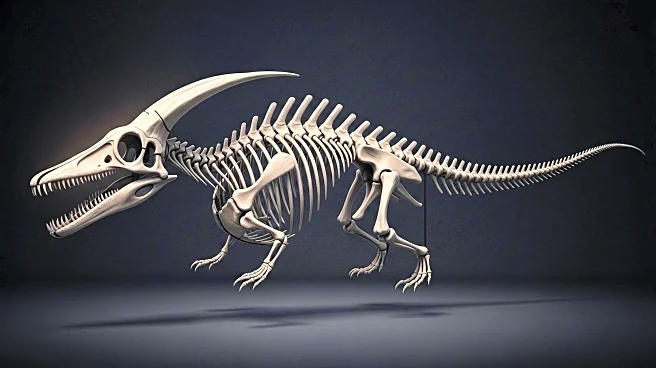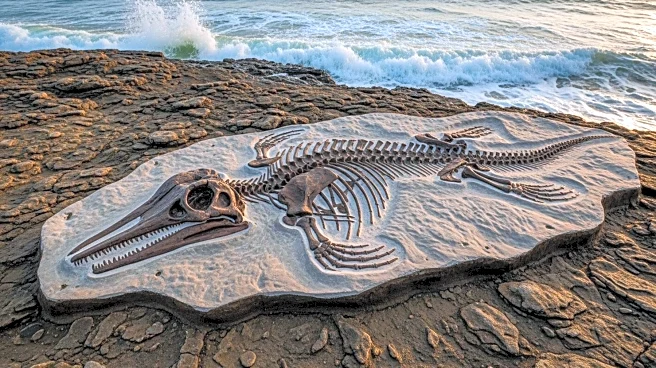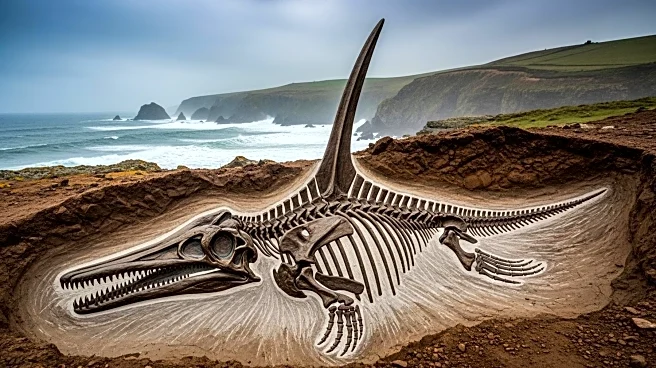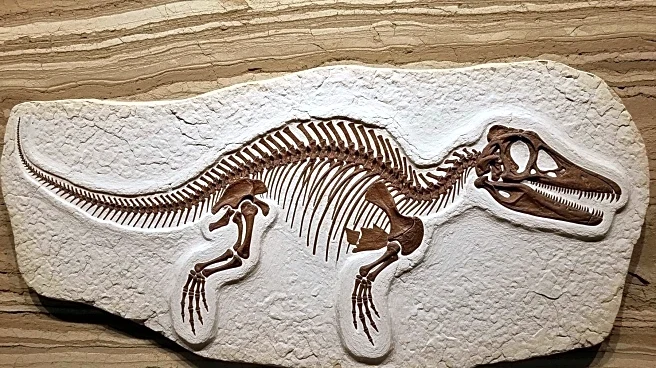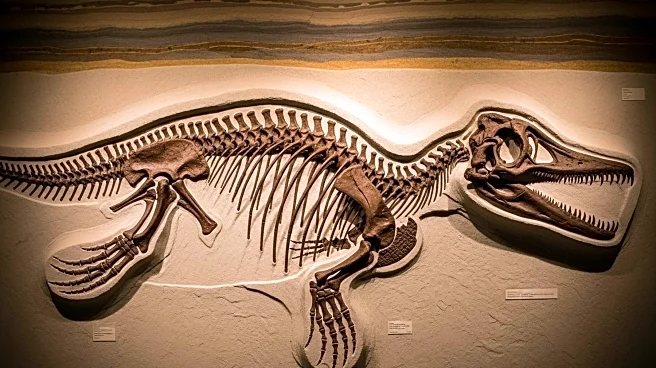What's Happening?
A newly identified species of ichthyosaur, named Xiphodracon goldencapensis or 'Sword Dragon', has been discovered on the UK's Jurassic Coast. The fossil, which was found near Golden Cap in 2001, features a long, sword-like snout and large eye sockets, suggesting it relied on keen vision to hunt in dim conditions. The ichthyosaur, approximately 3 meters long, lived during the Early Jurassic period, specifically the Pliensbachian age. The fossil also reveals unique features, such as prong-like structures near the nostril, which have not been seen in ichthyosaurs before. This discovery provides insights into ichthyosaur evolution, particularly after the end-Triassic extinction event.
Why It's Important?
The discovery of Xiphodracon goldencapensis offers significant insights into the evolutionary history of ichthyosaurs, particularly during the transition from the Triassic to the Jurassic period. This period marked a shift from large super-predator ichthyosaurs to smaller, more diverse species. The unique features of the Sword Dragon contribute to understanding the varied lifestyles and adaptations of Jurassic ichthyosaurs, which had different diets, swimming speeds, and habitats. This find enriches the paleontological record and enhances knowledge of marine reptile evolution during a critical period in Earth's history.
What's Next?
Further analysis of the Sword Dragon fossil may reveal more about its diet and ecological role during the Early Jurassic period. Researchers might explore the implications of its unique anatomical features and how they influenced its hunting strategies and survival. Continued study of ichthyosaur fossils could provide deeper insights into the evolutionary pathways and environmental adaptations of these marine reptiles.
Beyond the Headlines
The discovery of the Sword Dragon highlights the importance of preserving fossil sites and collections, as this specimen was initially overlooked for years. It underscores the potential for significant scientific findings from existing collections and the need for ongoing research and exploration in paleontology.

